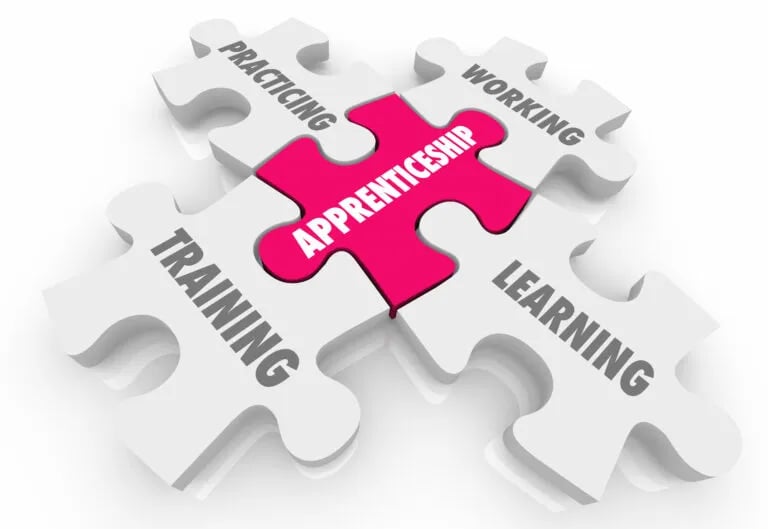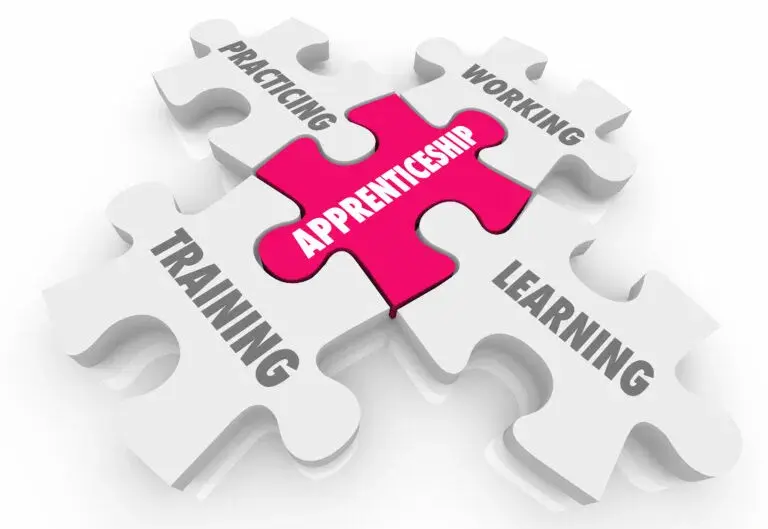Apprenticeships - What Employers should consider
Are you considering apprenticeships as a recruitment option or even a training option to upskill current employees?
Apprenticeships allow organisations to develop valued staff members to enhance their skills and support their career, while simultaneously improving the quality of your workforce. Looking at the apprenticeship route for the first time can be daunting, but it doesn’t need to be as complex as it can first appear.

Training Provider
Firstly, finding the right training provider is important. Recruitment can be stressful and unless you have extensive experience in the process, funding options can also be confusing. A good training provider will help you recruit you apprentice, access the funding available to you and make the onboarding process as simple as possible, for both your organisation and your apprentice. Checking a training provider’s Ofsted and ESFA reviews is always a good place to start.
Funding
It’s important to know that organisations can receive funding for different training options and apprenticeships are no different. The Apprenticeship Levy is a tax designed to fund all apprenticeships and your organisation will pay this whether you use it or not – so make sure you’re utilising it! The Levy applies to all organisations with an annual pay bill of over £3million per annum. Organisations who don’t pay the Apprenticeship Levy are able to use the surplus funds within the system! Watch this video for more information.
Choosing the right Apprenticeship
Apprenticeships follow a structure called a “standard”; these programmes are designed by Employers rather than Exam Bodies making them more relevant to other employers. There are 820 apprenticeship standards across a huge range of subject areas with 220 engineering courses from level 2 right up to Level 7 (Masters Degree)1 Many of the new Standards for engineering provide more flexibility through multiple role-specific pathways within the programmes and give you the option of which skills your apprentice will learn for their chosen career path. Many apprenticeships follow a progression route, meaning if your apprentice completes a Level 2 qualification, for example, they will be able to progress to Level 3 when they feel ready, to enhance their skills even further.
Other things to consider
Entry requirements differ for different routes and while sometimes the entry requirements are up to the employer, other times there will be qualifications that need to be obtained prior to an apprentice entering the qualification at that level. It’s worth researching these requirements before deciding on a standard or pathway.
For some levels of Apprenticeships, the apprentice may be required to undertake a functional skills assessment in both maths and English. This is if they are unable to produce a certificate of achievement in these subjects.
Where you want your apprentice should have some careful consideration. Many training providers offer day release once a week to a training facility to allow for apprentices to undertake their training off-site. Other may be able to come into the organisation to deliver the training and some even have an option for block release, where apprentices train a whole week at a time, so it’s worth thinking about with option works best for your organisation.
Finally, the End Point Assessment process varies for different Apprenticeships. It’s worth discussing what will be expected of your apprentice at EPA with your training provider.
Now that you’re all clued up, check out the apprenticeships we offer at Qualitrain Engineering Academy that could be just what you’re looking for!
References
Share this
You May Also Like
These Related Stories

Top 5 reasons to hire an apprentice

Can the business really spare the time for training?


No Comments Yet
Let us know what you think